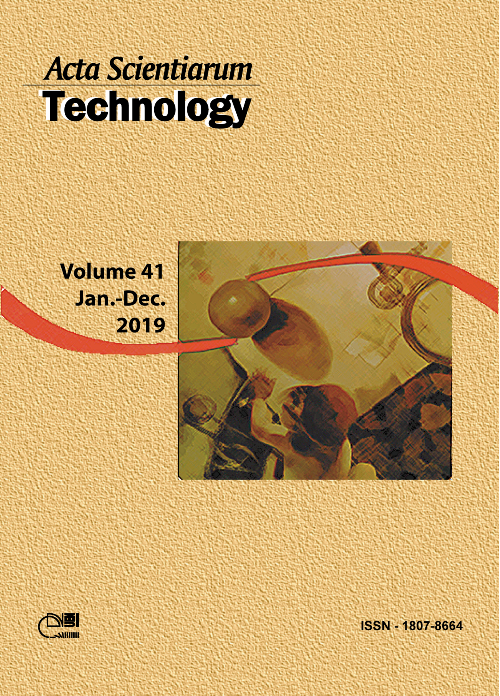Influence factors in the adjustment of parameters of the modified first-order kinetics equation used to model constructed wetland systems
DOI:
https://doi.org/10.4025/actascitechnol.v41i2.36709Keywords:
biological treatment, organic matter decay, flow regimes, treatment systems, mathematical modelling.Abstract
The aim of the present work was to evaluate the relationship between the hydraulic retention time power parameter (n) of the modified first-order kinetic mathematical model (MFOKM) with the hydraulic dispersion number (d) and the organic matter degradability, obtained from the ratio of chemical and biochemical oxygen demands (COD/BOD) along the length of horizontal subsurface flow constructed wetlands (HSSF-CWs). For this purpose, unplanted HSSF-CWs prototypes of equal volumes and length/width ratios (L W-1) of 1.0, 4.0 and 7.3 were used. All HSSF-CWs were filled with gravel # 0 and received sanitary sewage (SW) during a period of 90 days, in which the BOD and COD, in the total and soluble forms, were monitored in the influent and effluents from the system. These units were subject to tracer tests, before and after the HSSF-CWs received the SW, to obtain d. The MFOKM was adjusted to the COD and BOD experimental data. In all cases, an inverse relation was observed between n and the parameters d or with the organic matter decay rate obtained in the initial part of the HSSF-CWs.Downloads
Download data is not yet available.
Downloads
Published
2019-05-02
How to Cite
Matos, A. T. de, Matos, M. P. de, Costa, R. de A., & Sperling, M. von. (2019). Influence factors in the adjustment of parameters of the modified first-order kinetics equation used to model constructed wetland systems. Acta Scientiarum. Technology, 41(1), e36709. https://doi.org/10.4025/actascitechnol.v41i2.36709
Issue
Section
Civil Engineering
License
DECLARATION OF ORIGINALITY AND COPYRIGHTS
I Declare that current article is original and has not been submitted for publication, in part or in whole, to any other national or international journal.
The copyrights belong exclusively to the authors. Published content is licensed under Creative Commons Attribution 4.0 (CC BY 4.0) guidelines, which allows sharing (copy and distribution of the material in any medium or format) and adaptation (remix, transform, and build upon the material) for any purpose, even commercially, under the terms of attribution.
Read this link for further information on how to use CC BY 4.0 properly.











8.png)




